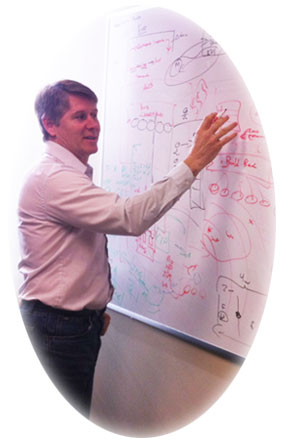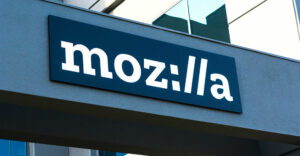A thin line between traditional IT monitoring and management services and monitoring real-time operations divides what Zenoss offers its customers and what other vendors provide.
The IT monitoring space is becoming more crowded with proprietary and open-source software solutions. According to Chief Technology Officer Alan Conley, Zenoss offers a uniform platform that extends its reach.
“We are categorized as being in the monitoring space, but I really see us participating in real-time operations,” Conley told LinuxInsider. It’s not just the monitoring aspect of it. We have a uniform platform, so we have more than a bunch of point products, which is what we typically see from the big four.”

Having a unified platform lets the Zenoss software talk to more than one type of endpoint, whether infrastructure, middleware, or application layer. That’s where the trend is headed: Everyone is trying to get to the point of service level management, he noted.
Addressing Data Center Challenges
Zenoss has a free, general-purpose, do-it-yourself version, but it also offers a full commercial enterprise-class version with more capabilities, support, training, and other professional services.
Zenoss’s chief marketing officer, Chris Smith, added that beyond the open-source unified platform it developed, the company’s structure around a commercial open-source business model separates Zenoss from the crowded playing field.
“What makes a difference from other companies in the pretty crowded monitoring space is that we were built from the ground up to address the challenges of what we call the modern data center and the heavily virtualized software data center,” Smith explained.
Prior to becoming the CTO of Zenoss, Conley was the CTO of the Network Management Group at Cisco Systems, where he worked on Cisco’s strategy and architecture for cloud management and next-generation networks.
In this interview, Conley discusses the need for a new breed of IT monitoring software and why traditional open-source do-it-yourself solutions fall short.
LinuxInsider: What led Zenoss to develop a new approach to IT management services?
Alan Conley: The dynamic nature of these virtualized data centers makes it kind of hard for the legacies with the static tools that have been used for the last 20 years. The old-school monitoring tools are not as well-fit to monitor the dynamic virtualized environments.
How much interplay or competition do you see between open-source and proprietary products or business models available to address this issue?
Conley: There are certainly other players in the monitoring space. Most of what you see is commercial, but there is a trend where a company starts with open source and builds out to follow the commercial model. Certainly, all of our large customers want a company behind the platform, so they opt for that notion. A lot of smaller companies start in the open source world and then gradually move towards the commercial as they get bigger or become more dependent on those solutions.
So, is the competition skewed in favor of commercial or proprietary software solutions?
Conley: There is competition out there, and there are companies that prefer open source, but I think you are going to see a trend where more and more people gravitate towards that particular direction, where things will initiate with open source and move towards the commercial experience.
It seems that open source is increasingly divided between a pure open-source model and a commercialized version. Is the crossover to a commercial business model becoming the path you see as more prominent?
Conley: Here is an example that helps answer that question. I recently went to the O’Reilly Strata Conference on Big Data. If you look at what was there, almost everything started on a set of Apache projects. What you saw at the conference was a whole slew of new companies building commercial offerings on top of open source.
They have a distribution of basically open source with no support, and they all have a commercial version with added features and support that enriches what you get with the open-source version in terms of better scale, better performance, or what you have. This is where we obviously play.
I think you are going to see that trend continue. There are obviously benefits from the open source side. You get broader adoption much faster, and you get crowdsourced. I think you will see more and more businesses move in that direction.
How are the challenges CTOs face today different from five years ago because of the growing use of open source?
Conley: I think the word ‘change’ is absolutely at the core of this. My experience is that technology continues to change at a very rapid pace. I think the big difference is when you look back to five or 10 years ago — products did not change the underpinnings of the products they sat on for many, many years. They have used the same sound core technologies.
What has happened is so much innovation is happening in the open source climate I’ve just described that you have to make sure your software architecture, your product, can evolve the underlying platform at a much faster rate than you have seen historically. That means you have to be more aware of what is going on in the industry today, keep an eye on that, and make sure you can update your core platform maybe once every three to four years as opposed to when people used to live on these things for every five to 10 years.
Is it just a singular challenge focused on navigating technical change?
Conley: Another big thing driving the industry is the SaaS [Software as a Service] cloud model. So one of the things that comes up in a CTO’s mind is, ‘How do I ensure that I architect my product so it can be deployed as a long-term product or as a SaaS solution without incurring a lot of overhead and having divergent code bases, divergent feature sets?’ and things like that. So, being aware of that change in the industry and understanding how to architect your product so it can reduce your overall cost to deliver is pretty important.
Is that the only real headache CTOs face today?
Conley: It is very important for CTOs to understand that the infrastructure, the things that you are managing, are no longer static. They become very dynamic. Virtualization is one thing that came up. From a CTO’s perspective, it is very important to understand how to adapt to those changes in the environment.
How much of an impact does what you describe have on system administrators?
Conley: It is definitely changing for sysadmins as well. Earlier in my career as an engineer and sysadmin, one of the challenges we faced was the notion of converged infrastructure and converged services. Traditional sysadmins now have to become more network-savvy, more storage-savvy, and more aware of virtualization platforms. I saw this first-hand at Cisco IT.
What else do you hope to see in open-source development to make it even more viable as a business model?
Conley: In this bigger picture, we always have people harping on how the cloud is here to stay. There is this overriding opinion that it’s all about automation. What a lot of that implies is integration. You have to have your open-source components have full sets of stable, public APIs so that you can integrate into adjacent systems.
Regarding this integration, what are the major problems that sysadmins face in monitoring the different open-source cloud offerings, such as OpenStack, CloudStack, and Eucalyptus?
Conley: Those platforms focus very specifically on provisioning and configuring virtual machines, but they have to have interfaces that can plug into upstream self-service catalogs or engines. For us, in particular, the hook there is important to monitor.
Look at and compare a few of the offerings, such as OpenStack and CloudStack. CloudStack is much more mature in terms of the interfaces available to plug into and build what we call a Zen pack, which is what we call our extension module to CloudStack for monitoring.
OpenStack is still considerably less mature — the interface is not there. So, if you are deploying an OpenStack solution today, the ability to monitor it is missing some of those public-facing APIs. I think that the whole notion of open source is making sure that those interfaces are there and that you understand how to apply them.
Given that assessment, how does Zenoss’ platform fix those shortcomings?
Conley: Our product is based on an open-source core model, which is basically free. We have the commercial version on top of that. The resource manager, which sits right on top of the core itself, provides the additional functionality that comes with the commercial version, as well as the ability to scale.
The impact module provides service-level monitoring. It says, ‘I have a bunch of pieces underneath my service that support databases and messaging infrastructures and virtualized infrastructure and all of the physical infrastructures.’ Understanding all of that infrastructure is really important for assessing the impact of each event on that service.
The final piece is our analytics product. It is largely the reporting engine that takes all of that data, understands the service model itself, and provides all of the analytics on questions such as, ‘When am I going to run out of capacity?’ ‘What are my service levels looking like?’ and ‘Where are we with the analytics?’
Is this product run locally on a customer’s hardware or does Zenoss monitor operations remotely?
Conley: We are also in beta testing for an extension of this product to be delivered as a SaaS. It is being built to populate on Amazon Web Services.
We are starting to take advantage of some of the back-end services on AWS to cater to tenancy and shared infrastructure to reduce some of the cost, but the experience to the end user will be pretty much the same whether it is on-premises or in the cloud. It is just a lightweight deployment for them in the SaaS offering, so they can be up and running very quickly.





















































